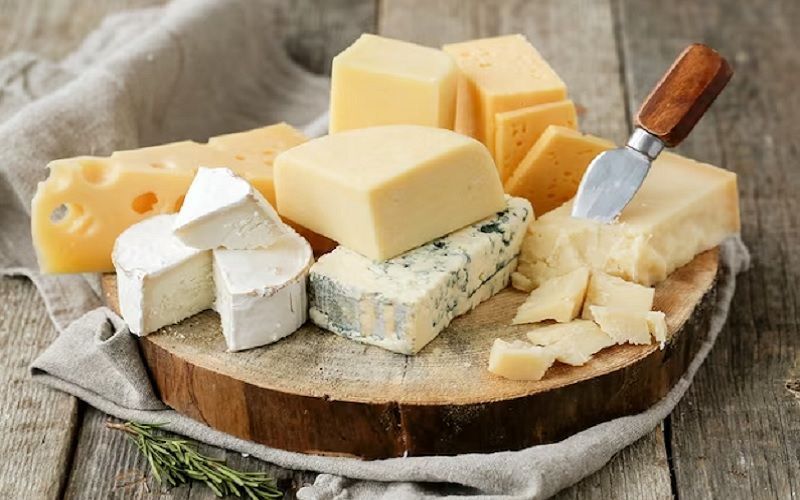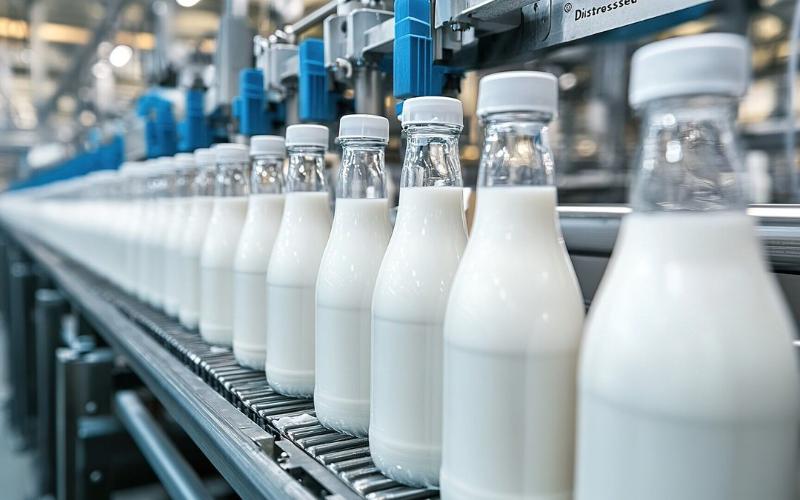How Effective is Cheese Tasting in the Local Market: BTL Marketing in the Food Industry?
Sourse: DairyNews.today
In the competitive world of food product marketing, where countless brands vie for consumer attention, traditional methods often fall short. This is where below-the-line (BTL) marketing strategies come into play, offering innovative and engaging approaches to product promotion. In the food sector, BTL initiatives like tasting events, food trucks, and other experiential formats have become powerful tools for attracting audiences and driving sales, reports Dairynews.today, citing expert opinion from the creative BTL agency "We."

The Rise of Experiential Marketing
Modern consumers crave experiences that go beyond simply consuming food. Experiential marketing aims to create memorable interactions that form deeper connections between brands and consumers. In the food sector, this manifests through immersive tasting events, pop-up activations, and culinary experiments that leave a lasting impression.
Tasting Events
One of the most effective BTL tactics in the food sector is organizing tasting events. Whether it's cheese tasting at a local market or beverage sampling in a trendy venue, these events allow consumers to experience products on a sensory level. Tasting events boost brand awareness and loyalty while providing valuable feedback fr om the target audience, helping brands refine their products and stay ahead of the competition.
Key Objectives of Tasting Events
Brand Awareness: Tasting allows consumers to experience the product firsthand, strengthening brand recognition.
Promotion of New Products: These events help introduce new products to the market and showcase their advantages over competitors.
Sales Growth: Positive tasting experiences encourage consumers to purchase the product, driving sales growth.
Choosing the Right Venue for Tastings
Points of Sale: The most effective locations for tastings are stores, supermarkets, or markets wh ere potential buyers are already searching for products.
High-Traffic Areas: Shopping malls, fairs, festivals, and sports events are excellent places to attract a large number of potential customers.
Food Trucks: Gastronomy on Wheels
Food trucks, or mobile kitchens, offer not only delicious dishes but also serve as powerful marketing tools for brands. By bringing their products to the streets and participating in festivals, fairs, and other events, companies can reach a diverse audience and create buzz around their products. The appeal of gourmet street food combined with the novelty of food trucks makes them an excellent choice for consumers seeking authenticity and culinary adventures.
Other Innovative Formats
In addition to tasting events and food trucks, BTL marketing in the food sector encompasses various other formats designed to engage audiences. For instance, pop-up restaurants allow brands to showcase their culinary expertise in temporary settings, generating excitement among the public. Interactive cooking demonstrations and masterclasses offer consumers the chance to learn new culinary skills while interacting with brands. Collaborations with influencers and celebrity chefs can also enhance brand recognition and authority, leveraging their loyal follower bases to drive sales.
Impact of Digital Integration
While BTL strategies primarily focus on offline interactions, their effectiveness is enhanced by seamless integration with digital channels. Social media serves as a powerful tool for spreading information, allowing brands to extend the reach of BTL campaigns and engage with a broader audience. Live streaming tasting sessions, behind-the-scenes footage of food trucks, and user-generated content fr om experiential events all contribute to creating a vibrant online community around the brand.
In a rapidly evolving market wh ere consumer preferences and behaviors are constantly changing, BTL marketing in the food sector demands a dynamic and versatile approach to product promotion. By utilizing tools like tasting events, food trucks, and other innovative formats, brands can create engaging experiences that resonate deeply with consumers. As technology continues to blur the lines between online and offline, the connection between BTL strategies and digital integration will play an increasingly important role in shaping the future of food product marketing.
Modern consumers crave experiences that go beyond simply consuming food. Experiential marketing aims to create memorable interactions that form deeper connections between brands and consumers. In the food sector, this manifests through immersive tasting events, pop-up activations, and culinary experiments that leave a lasting impression.
Tasting Events
One of the most effective BTL tactics in the food sector is organizing tasting events. Whether it's cheese tasting at a local market or beverage sampling in a trendy venue, these events allow consumers to experience products on a sensory level. Tasting events boost brand awareness and loyalty while providing valuable feedback fr om the target audience, helping brands refine their products and stay ahead of the competition.
Key Objectives of Tasting Events
Brand Awareness: Tasting allows consumers to experience the product firsthand, strengthening brand recognition.
Promotion of New Products: These events help introduce new products to the market and showcase their advantages over competitors.
Sales Growth: Positive tasting experiences encourage consumers to purchase the product, driving sales growth.
Choosing the Right Venue for Tastings
Points of Sale: The most effective locations for tastings are stores, supermarkets, or markets wh ere potential buyers are already searching for products.
High-Traffic Areas: Shopping malls, fairs, festivals, and sports events are excellent places to attract a large number of potential customers.
Food Trucks: Gastronomy on Wheels
Food trucks, or mobile kitchens, offer not only delicious dishes but also serve as powerful marketing tools for brands. By bringing their products to the streets and participating in festivals, fairs, and other events, companies can reach a diverse audience and create buzz around their products. The appeal of gourmet street food combined with the novelty of food trucks makes them an excellent choice for consumers seeking authenticity and culinary adventures.
Other Innovative Formats
In addition to tasting events and food trucks, BTL marketing in the food sector encompasses various other formats designed to engage audiences. For instance, pop-up restaurants allow brands to showcase their culinary expertise in temporary settings, generating excitement among the public. Interactive cooking demonstrations and masterclasses offer consumers the chance to learn new culinary skills while interacting with brands. Collaborations with influencers and celebrity chefs can also enhance brand recognition and authority, leveraging their loyal follower bases to drive sales.
Impact of Digital Integration
While BTL strategies primarily focus on offline interactions, their effectiveness is enhanced by seamless integration with digital channels. Social media serves as a powerful tool for spreading information, allowing brands to extend the reach of BTL campaigns and engage with a broader audience. Live streaming tasting sessions, behind-the-scenes footage of food trucks, and user-generated content fr om experiential events all contribute to creating a vibrant online community around the brand.
In a rapidly evolving market wh ere consumer preferences and behaviors are constantly changing, BTL marketing in the food sector demands a dynamic and versatile approach to product promotion. By utilizing tools like tasting events, food trucks, and other innovative formats, brands can create engaging experiences that resonate deeply with consumers. As technology continues to blur the lines between online and offline, the connection between BTL strategies and digital integration will play an increasingly important role in shaping the future of food product marketing.












